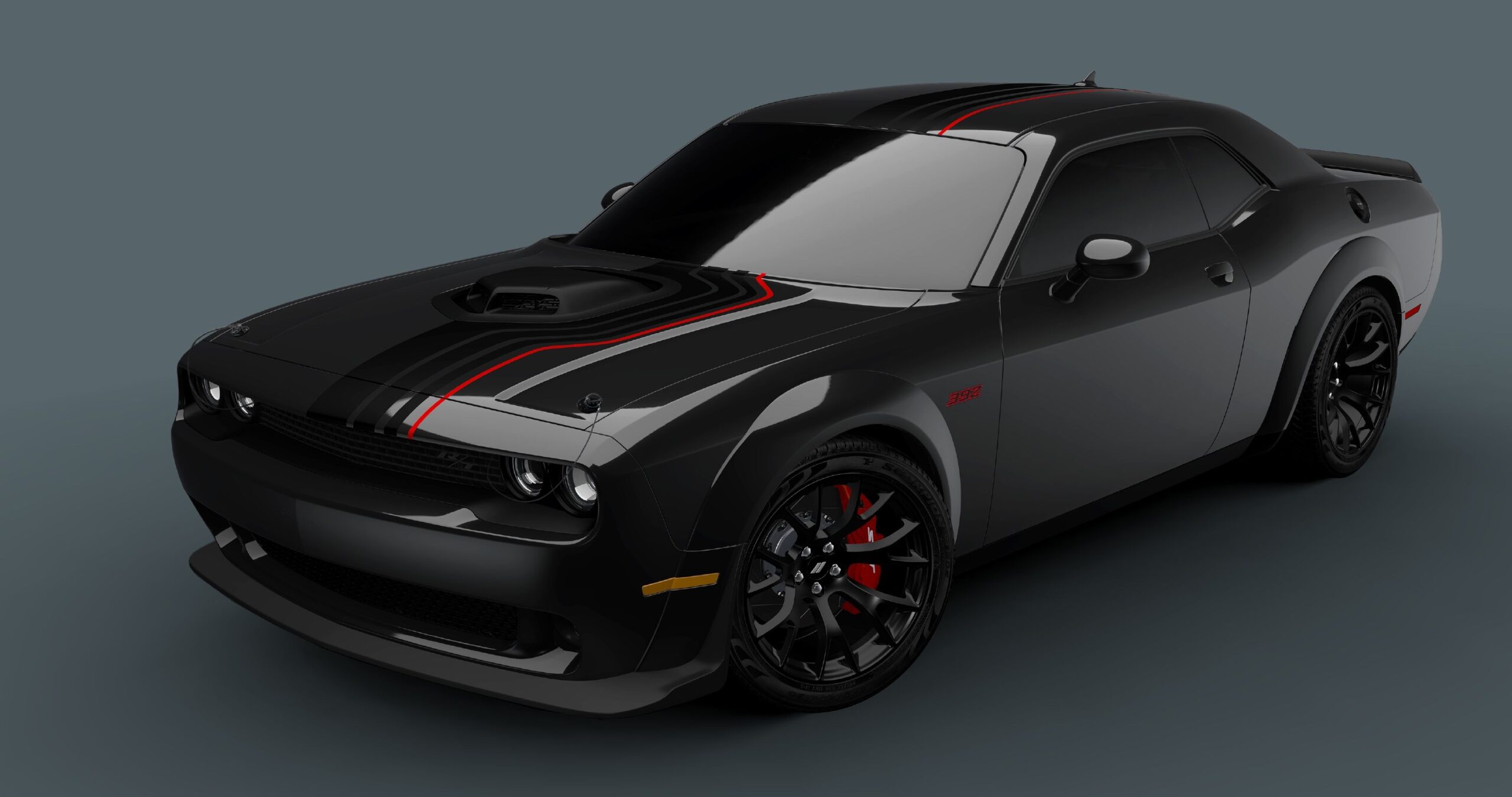Is the Dodge Charger a Sports Car: Complete Classification Guide
Understand sports car classifications
Whether the Dodge Charger qualify as a sports car touches on fundamental automotive classifications that have evolved over decades. Sports cars traditionally emphasize handling, agility, and performance orient design, while muscle cars prioritize straight line acceleration and raw power.
Automotive experts broadly define sports cars as vehicles design chiefly for performance driving, feature lightweight construction, precise handling characteristics, and aerodynamic bodywork. These vehicles typically sacrifice practicality for performance, offer minimal cargo space and seating for two passengers.
Traditional sports car characteristics
Classic sports cars share several defining features that distinguish them from other performance vehicles. Low slung profiles reduce the center of gravity, improve corner capabilities. Rear wheel or all-wheel drive systems provide optimal power distribution for dynamic driving situations.
Weight distribution play a crucial role in sports car design. Engineers position engines and components to achieve near perfect balance, typically target a 50:50 front to rear weight ratio. This balance enhance steer response and overall drive dynamics.
Sports cars besides prioritize driver engagement through manual transmissions, precise steering systems, and firm suspension setups. These characteristics create an intimate connection between driver and machine that define the sports car experience.

Source: topspeed.com
The Dodge Charger’s design philosophy
Dodge engineers the charger as afour-doorr sedan that deliver muscle car performance in a practical package. This approach represent a departure from traditional sports car philosophy, emphasize straight line acceleration over corner prowess.
The charger’s substantial size and weight distinguish it from conventional sports cars. Full size dimensions accommodate five passengers and significant cargo capacity, prioritize daily usability over pure performance credentials.
Performance variants and capabilities
Multiple charger variants offer different performance levels, from efficient v6 engines to supercharge v8 power plants. TheSRTthell catt variants produce over 700 horsepower, deliver acceleration figures that rival dedicated sports cars.
Nonetheless, the charger’s performance characteristics lean intemperately toward straight line acceleration quite than corner ability. The vehicle’s substantial curb weight and sedan proportions limit its agility compare to purpose build sports cars.
Advanced all-wheel drive systems available on certain models improve traction and handling, but can not overcome the fundamental physics of the charger’s size and weight distribution.
Muscle car heritage and identity
The charger’s lineage trace rear to the golden era of American muscle cars, when manufacturers prioritize powerful engines in mid-size platforms. This heritage shape the modern charger’s identity as a muscle car instead than a sports car.
Muscle cars traditionally feature large displacement engines in comparatively affordable packages, make high performance accessible to average buyers. The charger continue this tradition with potent v8 options in a practical four doors format.
Modern muscle car evolution
Contemporary muscle cars have evolved to incorporate advanced technology and improved handling capabilities while maintain their power focus identity. The charger exemplify this evolution with sophisticated suspension systems and electronic stability controls.
Despite these improvements, the fundamental muscle car philosophy remain unchanged. Raw power and acceleration take precedence over refined handling dynamics and lightweight construction.
The charger’s styling to reflect muscle car aesthetics instead than sports car design principles. Boldface, aggressive lines emphasize presence and power over aerodynamic efficiency.
Comparative analysis with true sports cars
Compare the charger to establish sports cars reveal significant differences in design priorities and performance characteristics. Sports cars like the Chevrolet corvette, Porsche 911, and BMW z4 prioritize handle balance and driver engagement.
Weight differences illustrate this distinction distinctly. The charger weigh importantly more than most sports cars, affect acceleration, braking, and corner performance. This additional mass stem from the sedan body style and comfort orient features.
Track performance considerations
On race circuits, the differences between sports cars and muscle cars become apparent. Sports cars excel in technical sections require precise handling and braking, while muscle cars perform substantially on high speed straights.
The charger’s size and weight create challenges in tight corners and elevation changes. Professional drivers note that the vehicle require different techniques compare to traditional sports cars.
Brake performance to differ importantly. Sports cars typically feature larger, more advanced braking systems design for repeat high performance use. The charger’s brakes, while capable, prioritize street drive over track use.
Performance sedan classification
Automotive journalists and manufacturers progressively use the” performance sedan ” lassification for vehicles like the charger. This category acacknowledgeshe unique characteristics of four door performance cars that don’t fit traditional sports car definitions.
Performance sedans blend practicality with performance, offer family friendly features alongside impressive acceleration and handling capabilities. This classification recognize the growth market for versatile performance vehicles.
Market position and competition
The charger competes against other performance sedans instead than traditional sports cars. Rivals include the Chrysler 300, Chevrolet ss, and various European sport sedans.
This competitive landscape reinforces the charger’s identity as a performance sedan instead than a sports car. Buyers typically cross shop similar four door performance vehicles quite thantwo-seatt sports cars.
Pricing strategies besides reflect this positioning. The charger’s price range aligns with other performance sedans and muscle cars instead than sports car segments.
Technical specifications and performance metrics
Examine the charger’s technical specifications provide objective data for classification discussions. Engine options range from efficient v6 units to supercharge v8 power plants produce extreme horsepower figures.
Transmission choices include both automatic and manual options, though most buyers select automatic transmissions for daily drive convenience. This preference reflect the vehicle’s practical orientation instead than pure sports car focus.
Handling and suspension systems
Modern chargers feature sophisticated suspension systems that improve handle compare to previous generations. Electronic damp systems and performance tune components enhance corner capabilities.
Nonetheless, these improvements work within the constraints of the charger’s fundamental architecture. The sedan platform and substantial weight limit ultimate handling potential compare to dedicated sports car designs.
All-wheel drive variants offer improve traction and stability, specially in adverse weather conditions. This capability add practical value but air increase vehicle weight.
Owner perspectives and drive experience
Charger owners oftentimes appreciate the vehicle’s unique combination of performance and practicality. The ability to transport passengers and cargo while deliver impressive acceleration appeals to buyers seek versatile performance.
Daily drive characteristics differ importantly from traditional sports cars. The charger offer comfortable seating, smooth ride quality, and user-friendly controls that prioritize convenience over pure performance engagement.
Enthusiast community view
Car enthusiast communities broadly classify the charger as a muscle car or performance sedan instead than a sports car. This consensus reflects understanding of traditional automotive categories and design philosophies.
Nonetheless, some enthusiasts argue that modern performance capabilities blur traditional classifications. High performance charger variants can match or exceed sports car acceleration figures, challenge conventional definitions.
Track day participants oftentimes bring chargers to race events, demonstrate the vehicle’s performance potential despite its non-sports car classification.
Industry expert opinions
Automotive journalists and industry experts systematically classify the charger as a muscle car or performance sedan. Professional reviews emphasize the vehicle’s straight line performance and practical capabilities kinda than sports car characteristics.
Expert analysis focus on the charger’s role in preserve American muscle car tradition while adapt to modern requirements. This perspective acknowledge the vehicle’s unique position in the automotive landscape.
Manufacturer marketing and positioning
Dodge markets the charger as a muscle car instead than a sports car, emphasize power, heritage, and attitude over handle precision. Marketing materials focus on acceleration figures and engine specifications.
This positioning strategy recognize the vehicle’s strengths and target audience. Buyers seek sports car characteristics typically consider different vehicle categories.
Brand identity besides influence classification discussions. Dodge’s performance reputation centers on muscle cars and powerful engines sooner than lightweight sports cars.

Source: dodge.com
Final classification assessment
Base on traditional automotive classifications, design philosophy, and performance characteristics, the Dodge Charger does not qualify as a sports car in the conventional sense. The vehicle’s four-door sedan configuration, substantial weight, and muscle car heritage place it firms in the performance sedan or muscle car categories.
Nonetheless, the highest performance charger variants deliver acceleration and power figures that rival many sports cars. This capability demonstrate how modern automotive engineering can blur traditional classification boundaries.
The charger succeed as a practical performance vehicle that offer sports car level acceleration in a family friendly package. This unique positioning serve buyers who want performance without sacrifice daily usability.
Finally, classification debates matter less than individual preferences and requirements. The charger deliver an engaging driving experience and impressive performance disregarding of categorical labels.


